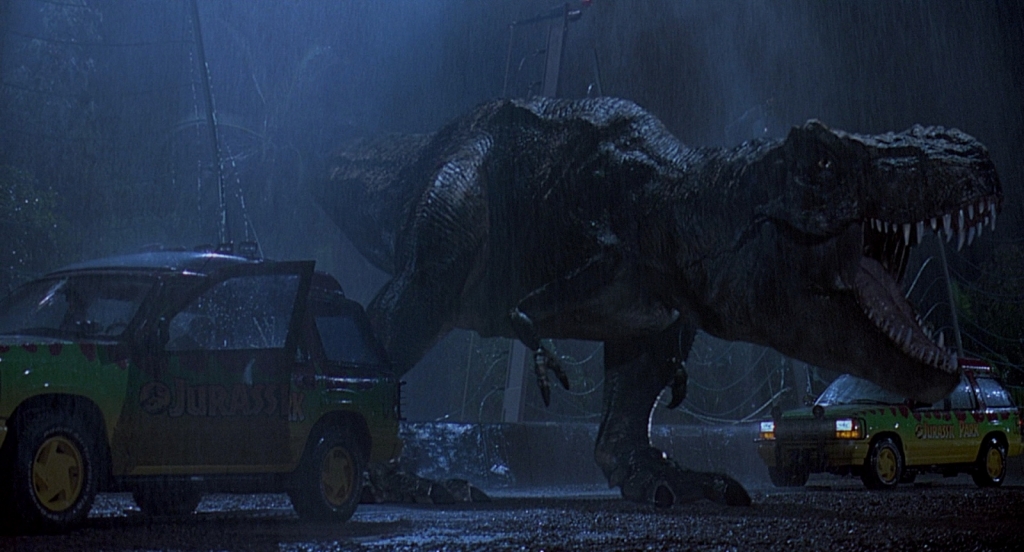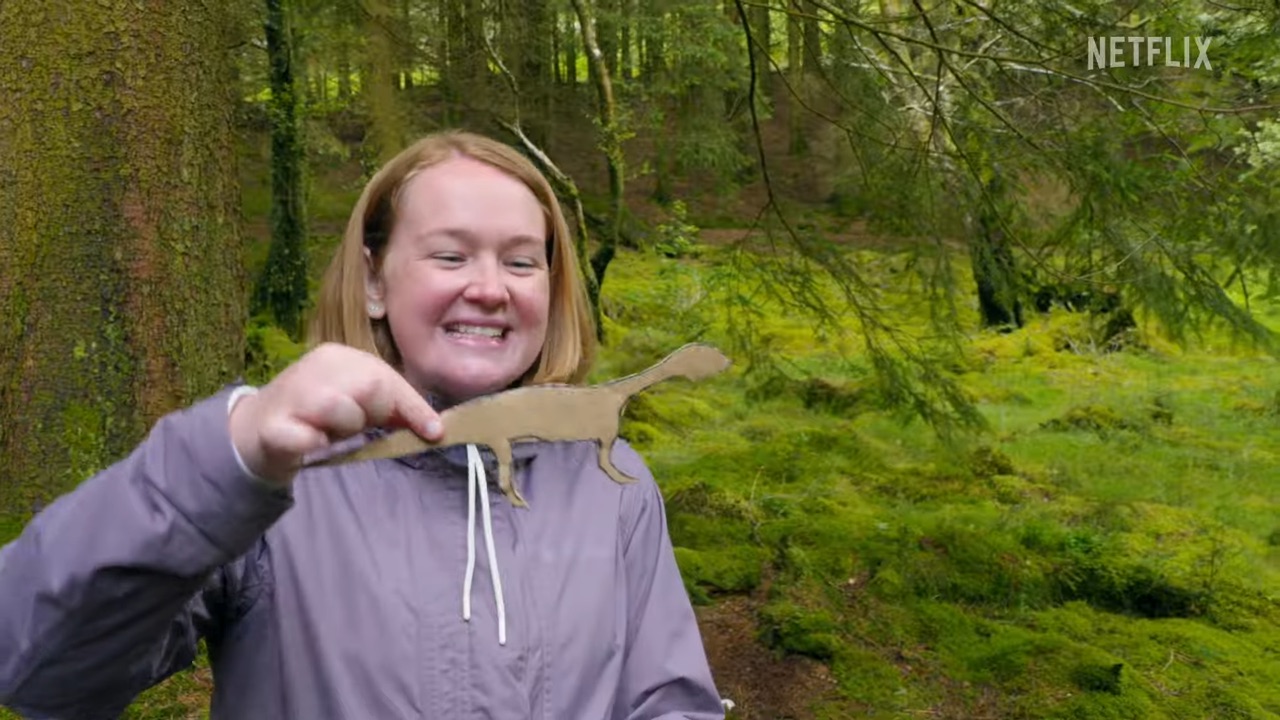On the film’s 30th anniversary, learn how the VFX studio was going to motion blur Tippett’s stop-motion puppets, before things went CG.
By now, we probably all know the famous story about how Steven Spielberg’s ‘full-motion dinosaurs’ in 1993’s Jurassic Park went from being Phil Tippett-created stop-motion puppets to become fully CG creations by Industrial Light & Magic (ILM), ultimately ushering in a new era of digital visual effects.
That transition occurred after secret tests conducted at ILM, under visual effects supervisor Dennis Muren, proved to Spielberg that digital dinosaurs were up to the task of being represented in full motion on screen, alongside Stan Winston’s animatronic creatures.
But, what I don’t think has been explored that thoroughly are the initial tests ILM undertook to add motion blur to Tippett’s stop-motion animation before CG was fully on the table. The idea was that stop-motion puppets would be shot frame-by-frame by Tippett’s team on bluescreen, and then composited by ILM into live-action plates, with motion blur also added to the creatures.
Why was motion blur so important? Well, if running, leaping dinosaurs were filmed for real, they would exhibit motion blur as they move. Motion blur added to stop-motion (and CG) animation therefore adds a level of realism that is not there when every part of a moving creature is in focus. Even though Tippett and ILM had earlier pioneered the groundbreaking go-motion technique–which moved puppets with motion-control movers between frames to add natural motion blur on the registered film–this kind of stepped animation was expensive and time-consuming and could still have an inherent ‘jumpy’ feel.
That was where ILM’s motion blur tests for Jurassic Park came in, to give what would be the ‘full-motion’ stop-motion dinosaurs more fluidity of motion.
Motion blur, with morfing?
ILM tried a couple of different techniques to add motion blur to some test stop-motion animation done by Tippett’s crew. One of those techniques involved utilizing an existing tool at the studio called MORF.

“MORF was a tool written by Doug Smythe, a very clever software guy at ILM,” recounts Brian Knep, who had only recently joined the studio in around 1992 as a software engineer and had been put on the team exploring adding motion blur to the stop-motion.
“Doug had written that MORF tool to let you metamorphosize from one image to another that was used in a bunch of films and commercials, and most prominently in Willow, where the lion morphs into a woman, and many other things. We thought it could work to help with frame interpolations.”
One thing to note at this time, of course, was that ILM was a major innovator in the digital manipulation of film images, including with its MORF tool and with other digital paint tools, as well as with the creation of synthetic characters seen in the likes of The Abyss and Terminator 2: Judgment Day. An extension of these efforts to adding motion blur certainly seemed within the studio’s grasp.
Stop-motion-morf
For the MORF approach, the general idea was that an artist would take film scans of the stop-motion animation (which had no motion blur) and ingest that into MORF. Then, as Knep explains, “we’d have two consecutive frames and we would essentially use Doug’s tool to morf from one frame to the other. You could use the inverse of that morf to morf from the second frame back to the first frame.”

The overall workflow was to morf from one frame to the next frame, take a collection of in-between frames and overlap those, although do this in a ‘noisy’ way that actually introduced the fake motion blur, as Knep describes below.
“Let’s say you have frame one and frame two. You could take frame one, move it a little bit along the way towards frame two, overlay that a little bit more, overlay that a little bit more, and overlay that, again. Now, one of the problems with that was you’d end up with a lot of different images overlapped, but we could manipulate it so that it looked more blurry and more noisy, essentially.”
At the time, MORF allowed for making outlines on subjects that would be morfed from one element to another. “For this Jurassic Park experiment,” details Knep, “you would draw an outline, then you’d go to the next frame and the outline would already be there and you could move all the points. It was essentially a big complicated spline around where the dinosaur was. You could move all those points and then you could toggle back and forth and see them. And then you could ‘turn on’ the motion blur and see how it looked by looking at the in-between frames.”

“There might have been some onion skinning as well so you could see with multiple frames on top of each other,” adds Knep, “but there weren’t a lot of bells and whistles because it was really just a proof of concept. It was really all about drawing splines around the outlines, making correspondences between the various splines, and then doing some clever stuff to warp from one spline to the other and pull and stretch the image in the correct way so that it looked like it was morfing one to the other.”
Did it work?
Knep says ILM had some success with this approach, and even worked on a full test shot of a velociraptor walk cycle, which had been animated against a grid.

However, issues would arise when parts of a dinosaur or things in the frame crossed over. “If you had two legs and they crossed over, there would be some points where the image tool didn’t have the information. And we had no real way back then to create the information, like in-painting or making a 3D section of it to morf.”
The other challenge, Knep found, was that this approach was very labor intensive. “Let’s say you had a walking velociraptor. You had to outline the velociraptor in every single frame and then make correspondences. You’d say, ‘This is his tail, these are his legs, these are his arms, this is his head. Here it is in the next frame, his tail, his legs, his arm.’ And then you’d have to check it, see how it looked, and then tweak things. It was a pain in the butt to do that, honestly.”
One issue that arose was the presence of obvious stretching on the imagery. For that, an artist could add extra splines. “The chest might not have been moving correctly,” recalls Knep, “so you could put another spline in for that area and have that start moving, like a chest spline. So, in addition to the outline, you could add other kinds of anchor splines that would just move in their own way and make the morfing look better.”

Did it work well enough to go in the film? Knep says that he was then too far down the chain to know what decisions were made by ILM supervisors and the filmmakers about the test results, but does remember that his experiments got far enough that another artist took the shot and made a scene out of it that was shown in dailies. “I think that means it was, at least, successful. It got to a level where people thought it might work and that it could have been a viable option. And then, we suddenly knew that we were going to go in this other direction.”
The new wave
That other direction was, of course, the 3D fully digital direction, orchestrated with those bones and later skinned CG T-rex and gallimimus tests at ILM. Knep recalls the first time he saw the tests emanating from the computer graphics department.

“I remember seeing a wireframe and being pretty amazed. But, I came from a software engineering background and I probably didn’t understand what I was seeing as much as other people. Everyone around me was saying, ‘This is groundbreaking because our whole way of doing things is going to change.’”
Indeed, things did change with Jurassic Park. Knep would continue on the film with several key contributions, including on the Dinosaur Input Device built to translate hand-articulated poses to a CG dino wireframe, and to ILM’s groundbreaking texture painting tool ViewPaint (Knep was awarded a Technical Achievement Award and a Scientific and Engineering Award from the Academy for each, respectively).
He looks back very fondly at his time at ILM three decades ago. “I have to say, I was very lucky to be in the right place at the right time for many of those things. It was such a magical experience. To be a part of such a big thing was simply just magical.”



















